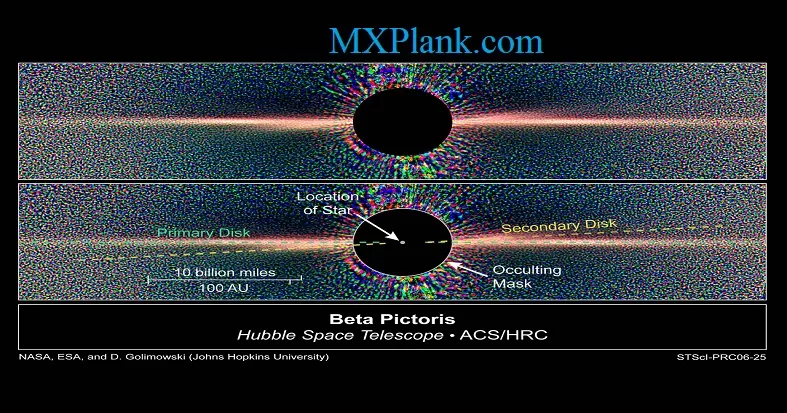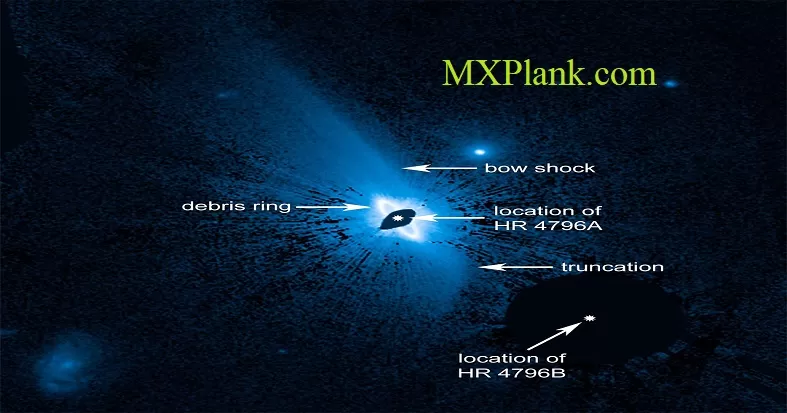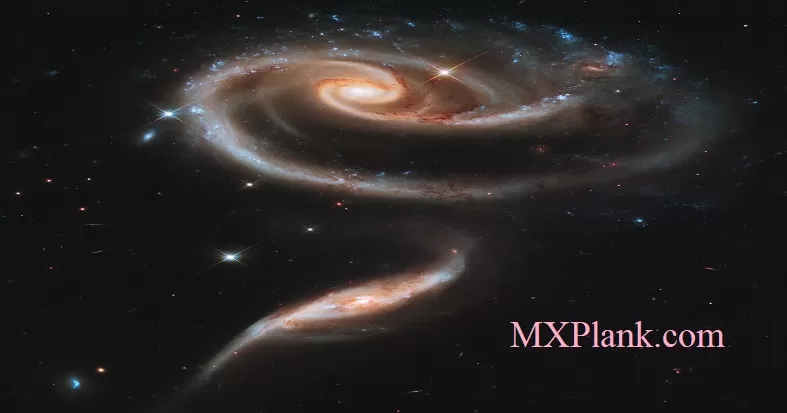I Zwicky 18 (ground-based image)

A wide field image of the sky around the galaxy I Zwicky 18 taken on the ground by the Digitized Sky Survey 2. The field of view is approximately 2.7 x 2.8 degrees.
NASA's Hubble Space Telescope snapped a view of what may be the youngest galaxy ever seen. This "late bloomer" may not have begun active star formation until about 13 billion years after the Big Bang. Called I Zwicky 18 [below, left], the galaxy may be as young as 500 million years old. This youngster has gone though several sudden bursts of star formation - the first only some 500 million years ago and the latest only 4 million years ago. This galaxy is typical of the kinds of galaxies that inhabited the early universe. The galaxy is classified as a dwarf irregular galaxy and is much smaller than our Milky Way.
The two major starburst regions are the concentrated bluish-white knots embedded in the heart of the galaxy. The wispy blue filaments surrounding the central starburst region are bubbles of gas that have been heated by stellar winds and intense ultraviolet radiation unleashed by hot, young stars. The redder stars are slightly older stars and star clusters, but they are still less than 1 billion years old. A companion galaxy lies just above and to the right of the dwarf galaxy. The companion may be interacting with the dwarf galaxy and may have triggered that galaxy's recent star formation. The red blobs surrounding the dwarf galaxy are the dim glow from ancient fully formed galaxies.
This image was taken with Hubble's Advanced Camera for Surveys in 2003.
Credit:
NASA/ESA and The Hubble Heritage Team (STScI/AURA)
NASA/ESA and The Hubble Heritage Team (STScI/AURA)






